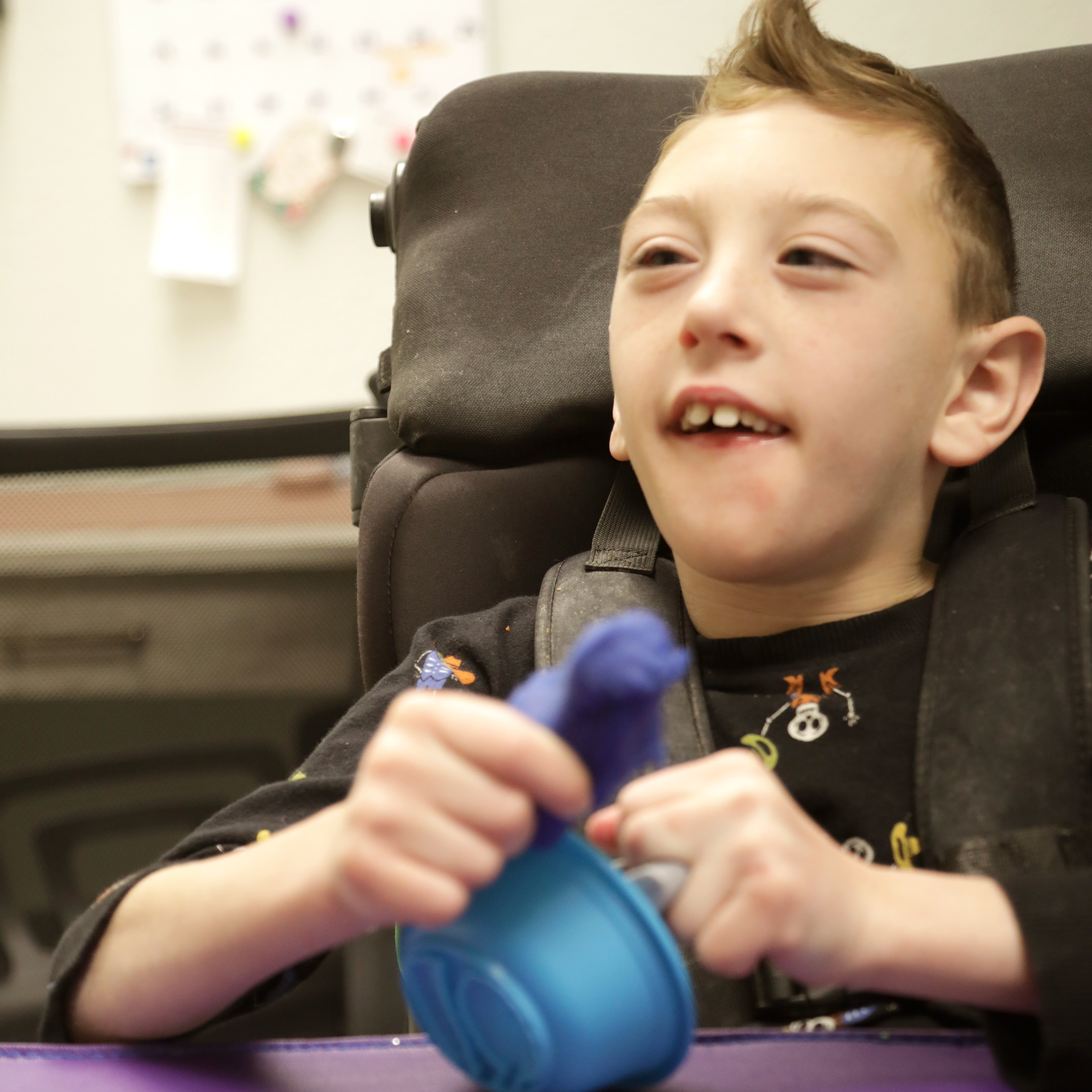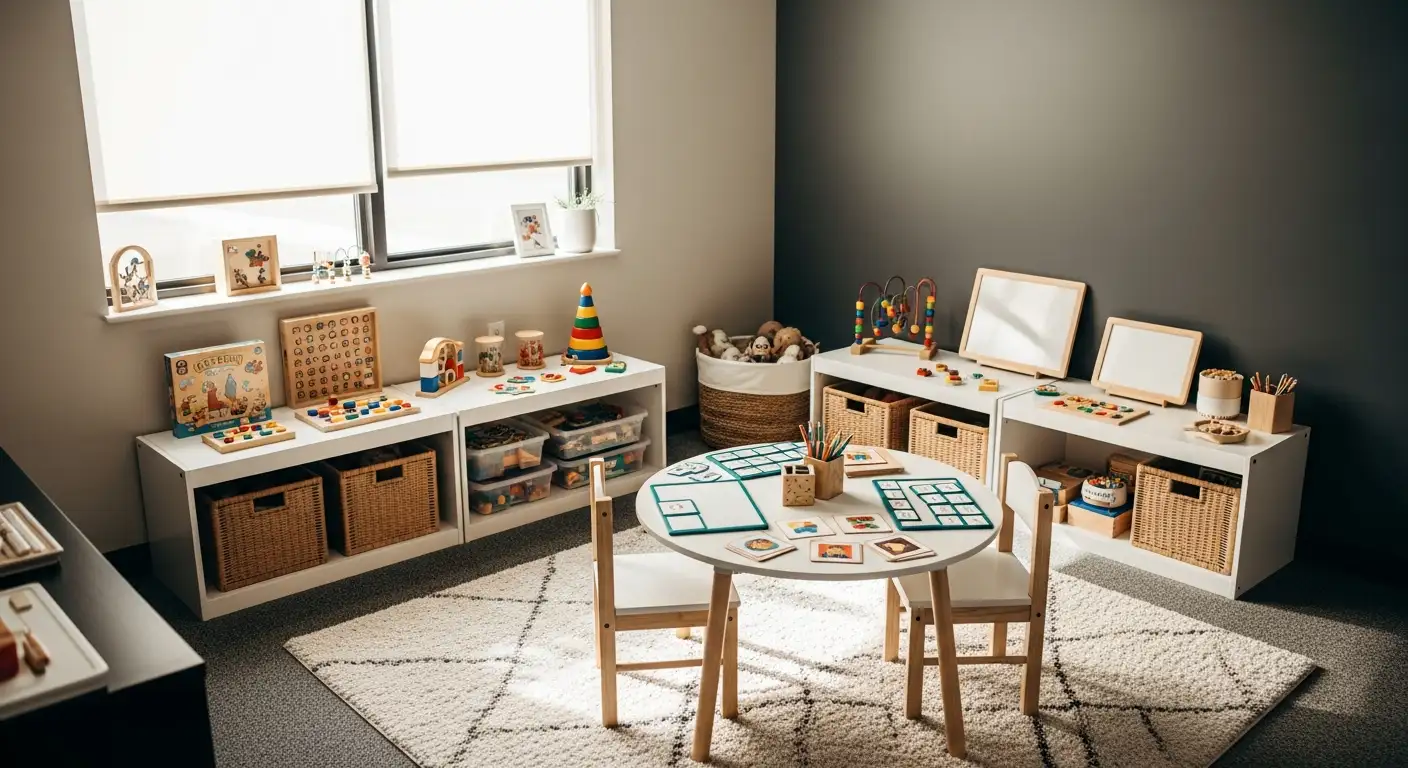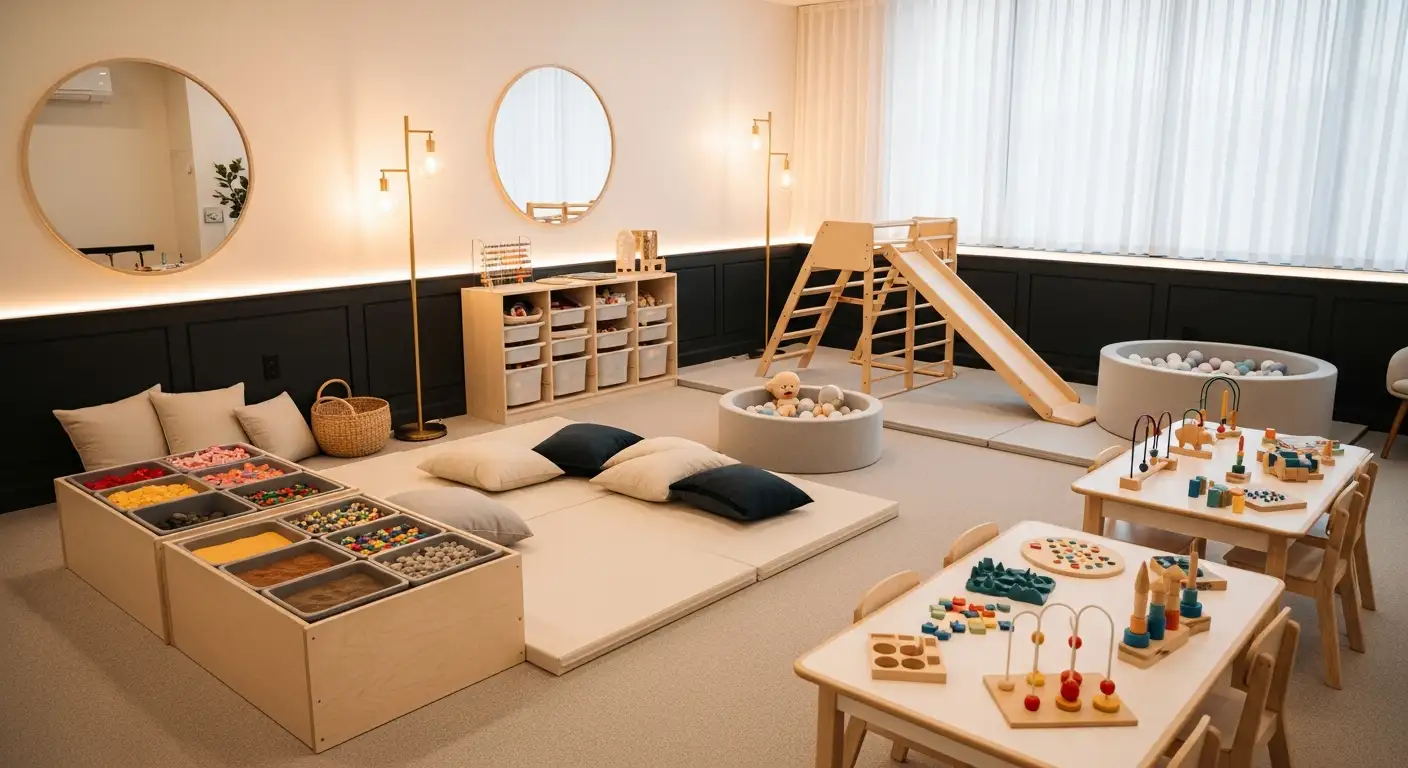The Role of Occupational Therapy in Addressing Sensory Processing Disorders


Understanding the Impact of Sensory Processing Disorders and the Occupational Therapy Approach
Sensory processing disorder (SPD) affects how individuals perceive and respond to sensory information, impacting their behavior, social interactions, and daily functioning. Occupational therapy (OT) plays a crucial role in assessing and treating these challenges through tailored, evidence-based interventions that foster sensory regulation and improve quality of life.
Identifying Sensory Processing Challenges in Children
What is sensory processing disorder and how does it impact individuals?
Sensory processing disorder (SPD) involves differences in how the brain perceives and responds to sensory inputs from senses like sight, sound, touch, taste, smell, and movement. Children with SPD may react more strongly or more weakly to sensory stimuli than typical. They might show signs of hypersensitivity, such as being overwhelmed by loud noises or bright lights, or hyposensitivity, like seeming under-responsive to pain or failure to notice sensory cues.
These sensory differences can influence a child's behavior and daily activities significantly. For example, a child sensitive to tactile input may avoid certain textures or resist grooming. Others may seek out intense sensory experiences like spinning or jumping to increase sensory input. These behaviors could affect social interactions, motor skills, and emotional regulation.
Signs of sensory processing disorder
Traits often include:
- Tactile aversions, such as dislike of certain fabrics or textures
- Excessive fidgeting and difficulty staying still
- Fear of heights or sound sensitivities
- Under-responsiveness to sensory inputs like pain or temperature
- Sensory-seeking behaviors like spinning, bouncing, or chewing on objects
- Challenges with motor coordination and emotional regulation
Sensory modalities involved
Sensory processing difficulty can affect multiple sensory systems:
- Tactile: touch and texture sensitivities
- Proprioceptive: awareness of body position and movement
- Vestibular: balance and spatial orientation
- Auditory: sound processing, including hypersensitivity or hyposensitivity
- Visual and gustatory: less commonly but still impacted in some cases
Impact on daily activities and behavior
Children with sensory challenges may struggle with routines like dressing, eating, or learning in school. They might react with irritability or withdrawal when overwhelmed. Such sensory issues can cause challenges in social settings, lead to frustration or anxiety, and impact a child’s ability to perform academic and play activities effectively.
Occupational therapy professionals use assessments to identify sensory processing difficulties and develop customized plans. Interventions such as sensory diets, environmental modifications, and play therapy aim to promote better sensory regulation, helping children build confidence and improve their daily functioning.
Assessing Sensory Processing in Occupational Therapy

What role does occupational therapy play in assessing and treating sensory processing challenges?
Occupational therapy is central to the evaluation and management of sensory processing issues in children. Therapists start by conducting detailed assessments that include observing how a child responds to various sensory stimuli in different environments, such as home, school, or dedicated therapy spaces.
These assessments combine clinical observations, direct testing, and gathering extensive input from caregivers and teachers. This comprehensive approach helps identify specific sensory sensitivities or hyposensitivities, and it clarifies how sensory difficulties impact daily activities like play, learning, and social interactions.
To facilitate accurate diagnosis and effective intervention, occupational therapists often use standardized assessment tools. These include the Sensory Integration and Praxis Tests (SIPT), Sensory Processing Measure (SPM), and the Test of Sensory Functions in Infants (TSFI). These tools provide structured data on sensory responses and help to pinpoint the child's sensory profile.
In addition, therapists heavily rely on observation to see how children react to sensory inputs during play and routine activities. They also ask caregivers about signs of tactile aversions, hypersensitivity, sensory-seeking behaviors, and motor challenges. This caregiver input is crucial, as it offers insights into the child's typical behavior across different settings and daily routines.
Based on the assessment findings, occupational therapists craft personalized treatment plans. These often incorporate sensory integration therapy, sensory diets, environmental modifications, and parent or teacher training programs. Goals include improving sensory regulation, reducing over- or under-responsiveness, and promoting better participation in daily life.
Overall, occupational therapy provides a nuanced understanding of a child's sensory processing style and systematically addresses difficulties through playful, engaging, and functional activities. This tailored approach helps children develop more adaptive responses to sensory stimuli, enhancing their overall well-being and functioning.
Therapeutic Approaches and Techniques in Practice

What are common therapeutic approaches used in occupational therapy to address sensory processing disorders?
Occupational therapy employs several strategies to help children with sensory processing issues better manage their sensory input. The most prevalent approach is sensory integration therapy (SIT), which is grounded in the Ayres Sensory Integration framework. This play-based, movement-oriented therapy uses equipment like swings, trampolines, and weighted vests to facilitate sensory processing.
Assessment is the first step, where therapists observe children and gather information from caregivers about their sensory responses—such as tactile sensitivities or difficulties with balance. Based on this, they develop personalized interventions aimed at improving how children respond to sensory stimuli. A central element of therapy is the use of sensory diets—a structured routine of activities tailored to the child's specific needs that promote calmness, alertness, or focus.
Use of Equipment and Activities
Therapists incorporate a variety of tools and activities that target different sensory systems:
| Equipment/Activity | Targeted Sensory System | Purpose and Benefits |
|---|---|---|
| Swings, ball pits, and climbing structures | Vestibular, proprioceptive | Enhance balance, spatial awareness, and body coordination |
| Weighted vests and blankets | Tactile, proprioceptive | Provide calming deep pressure stimuli |
| Squeeze machines and brushing | Tactile | Offer calming sensory input, improve tactile defenses |
| Spinning to music, astronaut training | Vestibular, auditory | Improve balance, auditory processing, and sensory seeking |
| Sensory play tools and obstacles | Multiple senses | Foster exploration, motor skills, and sensory regulation |
These activities are often performed in specialized settings called sensory gyms, designed to create safe and stimulating environments for children.
Sensory Diets and Home Programs
Beyond clinical sessions, parents and caregivers are trained to implement sensory diets at home. These routines involve activities like jumping, bouncing, chewing on textured objects, or using weighted items to help children self-regulate throughout the day.
Creating a sensory diet is part of a broader goal: helping children develop adaptive responses to sensory input, reducing sensitivities or seeking behaviors that interfere with daily life. Tailoring these routines to each child's sensory profile fosters better emotional regulation, focus, and participation in school and social settings.
Final Note
While some professionals remain cautious about claims that sensory therapy can permanently 'rewire' the brain, many families observe improvements in their child's comfort and social skills. These personalized, engaging interventions aim to support skill development and enhance overall wellbeing, making sensory integration therapy a cornerstone of occupational treatment for sensory processing disorders.
Understanding Sensory Integration Therapy in-depth

How does sensory integration therapy work in occupational therapy?
Sensory integration therapy (SIT) is a technique used by occupational therapists to help children and sometimes adults better respond to sensory input. It is grounded in the idea that difficulties in processing sensory information can lead to challenges in behavior, motor skills, and social interactions.
SIT involves engaging individuals in structured, play-based activities that deliver controlled sensory stimuli. These activities are carefully selected and tailored to meet each child's unique sensory profile. For example, a child might swing back and forth to provide vestibular input, or use a soft brush in accordance with the Wilbarger protocol to offer calming tactile pressure.
The primary goal of this therapy is to improve the brain’s capacity to organize, interpret, and respond appropriately to sensory information. Over time, these repeated, purposefully designed activities help strengthen neural pathways — a concept rooted in neuroplasticity — aiming to make sensory responses more functional and less overwhelming.
Through activities like bouncing on therapy balls, climbing, or water play, children learn to better regulate their reactions to sensory stimuli. These play-based interventions also promote feelings of safety and enjoyment, making the therapy engaging.
While the benefits reported by families include improved concentration, reduced anxiety, and better social participation, the scientific community continues to examine the long-term benefits and efficacy of sensory integration therapy, emphasizing the importance of individual assessment and customized treatment plans.
By focusing on the child's specific sensory challenges, occupational therapists help foster not only better sensory responses but also enhance overall daily functioning, emotional well-being, and social skills.
Benefits of Occupational Therapy for Sensory Challenges
What are the benefits of occupational therapy for individuals with sensory processing issues?
Occupational therapy offers significant support for children and adults experiencing sensory processing difficulties. By focusing on developing, restoring, and maintaining essential skills, therapy helps improve overall sensory regulation. This means individuals can respond more appropriately to sensory stimuli, reducing feelings of discomfort and anxiety that often accompany sensory overload.
One of the primary benefits is the reduction of challenging behaviors. Children with sensory issues may experience meltdowns or withdrawal due to difficulty managing sensory input. Occupational therapy uses tailored techniques such as sensory integration therapy, sensory diets, and engaging play-based activities to help clients learn self-regulation strategies.
Improving motor skills and sensory coordination is another important aspect. Activities that involve swinging, bouncing, jumping, or brushing stimulate the senses in a controlled manner, leading to better focus and smoother movement. These improvements often translate into increased independence in daily routines and social interactions.
Parents and caregivers play a vital role. They are trained in implementing sensory diets and calming techniques at home, which reinforces progress made during therapy sessions. This collaborative approach ensures that sensory strategies are consistent across environments.
Overall, occupational therapy fosters emotional well-being, enhances social participation, and improves functional skills. It allows individuals to manage their sensory challenges more effectively, opening pathways to greater participation at school, home, and within the community.
Supporting Children in Managing Sensory Challenges

How can occupational therapy support children in managing sensory challenges?
Occupational therapy (OT) provides tailored support for children experiencing sensory processing difficulties. This therapy primarily involves sensory integration techniques, where children are engaged in carefully selected activities such as swinging, bouncing, spinning, brushing, and resistive exercises. These activities help children learn to process sensory inputs more effectively and develop appropriate responses, which is crucial for improving self-regulation and decreasing anxiety.
Therapists start with detailed assessments, observing children’s reactions to various stimuli and talking with caregivers to identify specific sensitivities or seeking behaviors. Based on these evaluations, they design personalized treatment plans. Common tools and strategies include weighted vests, fidget toys, and sensory diets—a structured routine of sensory activities—aimed at helping children maintain optimal arousal levels.
Parental involvement is central to successful therapy. Caregivers are often trained in techniques such as the Wilbarger brushing protocol, which involves gentle, deep pressure using a soft brush and joint compressions to soothe tactile defensiveness. This training allows parents to continue supporting their child's regulation at home, creating a consistent sensory-friendly environment.
Overall, occupational therapy aims to help children develop natural, adaptive responses to sensory stimuli. This leads to improvements in social interactions, emotional regulation, motor skills, and daily participation in activities at home and school. By focusing on the child's unique sensory profile, OT fosters greater comfort and confidence in navigating their environment.
Goals and Outcomes of Occupational Therapy Interventions

What are the typical goals and expected outcomes of occupational therapy interventions for sensory processing disorders?
Occupational therapy (OT) interventions for children with sensory processing difficulties aim to help them better interpret and respond to sensory information. One of the main goals is to enhance sensory regulation, allowing children to manage their reactions to stimuli more effectively. This can involve reducing hypersensitivities—such as aversions to tactile or auditory input—and increasing sensory-seeking behaviors that help children feel more balanced.
Personalized, measurable objectives guide therapy plans. Therapists set specific targets based on each child's unique sensory profile, often applying the SMART (Specific, Measurable, Achievable, Relevant, Time-bound) framework. For example, a goal might be for a child to tolerate wearing certain textures or to stay engaged in a classroom for a specific period.
Improved sensory responses result in greater participation across various environments—home, school, and social settings. Children learn to regulate their emotions better, leading to reductions in anxiety, meltdowns, and behavioral issues. These improvements foster greater independence in daily activities such as dressing, eating, and personal hygiene.
Another essential outcome is an increase in social participation. As children feel more comfortable with sensory input, they are more likely to engage in play, interact with peers, and develop communication skills. Enhancing self-regulation also contributes to better classroom behavior, focus, and academic performance.
Overall, OT aims to promote a child's confidence and independence by helping them develop automatic and appropriate responses to sensory stimuli. These strategies include sensory diets, environmental modifications, and sensory-motor activities, which together support a better quality of life.
| Goal Area | Expected Outcome | Specific Strategies |
|---|---|---|
| Sensory Regulation | Reduced sensitivities, increased tolerance | Sensory diets, desensitization activities |
| Emotional and Behavioral Control | Decreased anxiety and meltdowns | Deep pressure techniques like brushing, weighted tools |
| Functional Independence | Mastery of basic daily tasks | Sensory integration exercises, environmental adaptations |
| Social Engagement | Improved social interactions | Play-based therapy, sensory-friendly social settings |
By focusing on these areas, occupational therapy helps children develop the skills necessary for successful, confident participation in daily life, paving the way for lifelong benefits.
Professional Assessment and Tailored Treatment Planning
How is professional assessment and treatment planning conducted for individuals with sensory processing disorders?
Proper assessment and planning are essential steps in supporting children with sensory processing issues. Occupational therapists (OTs) play a pivotal role in this process by conducting thorough evaluations. These assessments typically start with detailed case histories and observations, where the therapist observes how a child responds to various sensory stimuli in different settings.
Standardized tools are often employed to gather structured data. Common assessments include the Sensory Processing Measure (SPM), Sensory Profile, and the Sensory Integration and Praxis Tests (SIPT). These tools help identify specific sensitivities such as tactile defensiveness, sensory seeking behaviors, or issues with vestibular or auditory processing.
During the evaluation, the therapist may use clinical observations—watching how a child reacts to textures, sounds, movement, and visual stimuli—and collect developmental and environmental information from parents and teachers. This comprehensive data provides insight into how sensory processing difficulties affect daily activities like play, learning, and social interactions.
Based on these findings, the therapist develops a personalized treatment plan. This plan often includes sensory integration therapy, which involves playful, movement-based activities tailored to the child's sensory profile. The plan may also feature sensory diets—structured routines that incorporate specific activities like swinging or jumping—to help regulate arousal levels.
Environmental modifications are also recommended, such as creating sensory-friendly spaces at home or in school by adjusting lighting, noise levels, and providing sensory tools like weighted vests or fidget toys. Parents and caregivers receive guidance on implementing these strategies consistently.
Regular follow-up assessments are vital to monitor progress and make adjustments as needed. Collaborative efforts involving speech therapists, psychologists, teachers, and family members ensure that interventions remain aligned with the child's evolving needs. Overall, this individualized and dynamic approach helps children develop better sensory regulation, improving their participation and functioning across settings.
The Importance of Sensory Integration in Occupational Therapy
What are the core principles of sensory integration?
Sensory integration (SI) is based on understanding how the nervous system processes sensory information from the environment and the body. It emphasizes that the brain organizes sensory input to produce appropriate, adaptive responses.
Occupational therapists assess how children respond to sensory stimuli and create personalized interventions to improve these responses. Techniques often used include playful, movement-based activities like swinging, jumping, and rolling, which stimulate visual, vestibular, tactile, and proprioceptive senses.
Sensory gyms equipped with swings, ball pits, and weighted vests provide opportunities for youths to engage in these activities safely. These interventions aim to normalize sensory responses, helping children better manage their environment and improve motor coordination, attention, and emotional regulation.
How does neuroplasticity relate to functional skills?
Neuroplasticity refers to the brain's ability to reorganize itself by forming new neural connections. This concept is fundamental in sensory integration therapy because targeted sensory experiences can promote changes in the brain's wiring.
Through consistent, structured activities, children develop more efficient neural pathways, which support improved sensory processing. These improvements translate into enhanced functional skills, such as reaching motor milestones, improving social interactions, and managing sensory sensitivities.
Occupational therapists leverage neuroplasticity by designing activities that challenge and stimulate the nervous system in a controlled environment, encouraging adaptation and growth.
Why is sensory integration therapy important for developmental and behavioral outcomes?
Difficulty with sensory processing can cause significant challenges in a child's development and behavior. For example, hypersensitivity might lead to avoidance of textures or sounds, while hyposensitivity can result in seeking excessive sensory input.
These issues can manifest as social withdrawal, tantrums, or motor delays, affecting academic performance and peer relationships. Sensory integration therapy directly targets these sensitivities by helping children find comfortable levels of sensory stimulation, bettering their ability to participate in daily routines.
Research supports that sensory-based interventions can reduce problem behaviors, improve attention span, and foster independence. For children with autism spectrum disorder, early sensory-focused therapy enhances their capacity to handle complex environments and supports better overall development.
| Aspect | Focus | Example Activities | Outcome |
|---|---|---|---|
| Core Principles | Sensory processing and neural organization | Swinging, brushing, and tactile play | Improved sensory response and regulation |
| Neuroplasticity | Brain reorganization through activity | Repetitive movement, sensory-motor activities | Enhanced motor and social skills |
| Developmental Impact | Improvement in daily functioning | Sensory diets, environmental adaptations | Greater independence and social engagement |
Incorporating sensory integration techniques into occupational therapy benefits children across various developmental domains, making it a vital part of comprehensive support for sensory processing difficulties.
Expert Perspectives and Evidence-Based Insights
What insights do experts and evidence-based practices offer regarding occupational therapy for sensory processing challenges?
Experts acknowledge the widespread nature of sensory processing difficulties among children with conditions such as autism spectrum disorder, ADHD, and cerebral palsy. Occupational therapy is recognized as a crucial intervention approach, with sensory integration therapy (SI) playing a prominent role.
This therapy involves engaging children in activities that provide tactile, proprioceptive, and vestibular input, aiming to improve their sensory regulation and daily functioning. Common techniques include swinging, brushing, joint compressions, and movement-based play within specially equipped sensory gyms.
While many families and practitioners report positive outcomes, scientific evidence supporting SI's effectiveness is still developing. Systematic reviews suggest that when therapy is delivered with high intensity and tailored to the child's specific needs, there can be meaningful improvements, especially in sensory modulation and behavioral responses.
Emerging assessment methods are focusing on neurophysiological measures. For example, multisensory integration tests evaluate how children process combined sensory inputs, providing more objective data on therapy progress and outcomes.
Despite ongoing debates about whether SI can induce permanent brain reorganization, practitioners emphasize the importance of personalized, client-centered intervention planning. Furthermore, ongoing research and development of standardized tools aim to enhance the evidence base, helping professionals refine their approaches.
In summary, experts advocate for a balanced view that recognizes the potential benefits of sensory-based occupational therapy while promoting further rigorous research to confirm long-term efficacy and optimize assessment strategies.
Supporting Sensory Integration for Better Daily Functioning
Occupational therapy is a vital component in addressing sensory processing disorders, employing comprehensive assessments and personalized, play-based interventions that target sensory regulation and integration. Through techniques like sensory diets, sensory gyms, and environmental adaptations, occupational therapists help children and adults develop automatic, appropriate responses to sensory stimuli, fostering increased independence, social participation, and emotional well-being. Collaboration among multidisciplinary teams, ongoing research, and caregiver involvement are essential to optimize outcomes. As understanding and evidence surrounding sensory integration grow, the role of occupational therapy remains central to supporting individuals with sensory challenges across diverse settings, ultimately enhancing their quality of life.
References
- Treating Sensory Processing Issues - Child Mind Institute
- Sensory Processing Disorder - The OT Practice
- A Survey of Occupational Therapists on a New Tool for Sensory ...
- Addressing Sensory Processing Challenges In Children: A Guide To ...
- Occupational Therapy for Sensory Processing Disorder - ASD Clinic
- Occupational Therapy & Sensory Issues
- Why is occupational therapy important for autistic children?
- Occupational Therapy for Sensory Processing - The OT Centre
- Helping Children with Sensory Processing in Occupational Therapy
Recent articles

How Pediatric Therapy Helps Kids Thrive across Montana and Wyoming
A supportive guide for families exploring therapy options in Billings, Butte, Missoula or Sheridan.

How to Choose the Right Pediatric Therapy Clinic in Billings, Montana
A Parent‑Friendly Guide To Finding The Best Support For Your Child

Expressive Speech Delay 2-Year-Old
Understanding and Addressing Expressive Speech Delay in Toddlers

How Speech Recognition Works
Unlocking the Power of Speech Recognition in Therapy and Healthcare

Autism and Head Size
Understanding the Complex Relationship Between Autism and Head Size

Occupational Therapy in Autism
Enhancing Independence and Quality of Life Through Occupational Therapy in Autism

